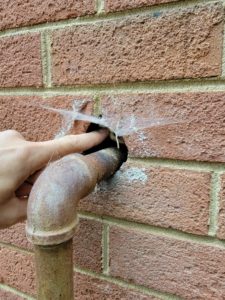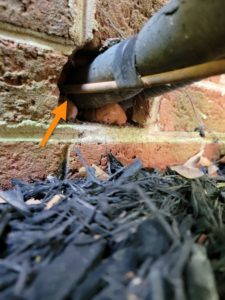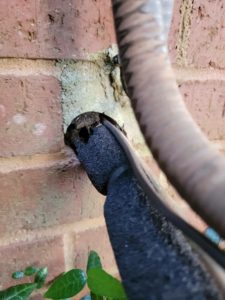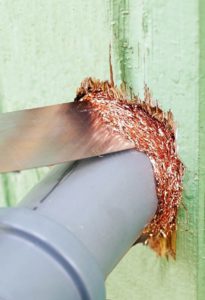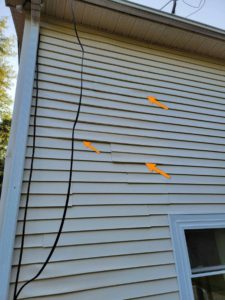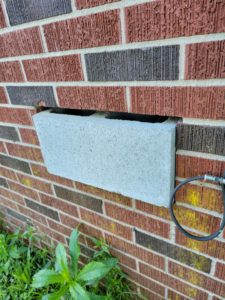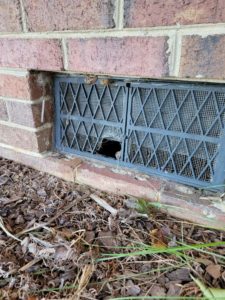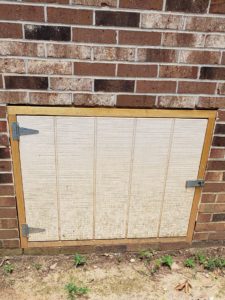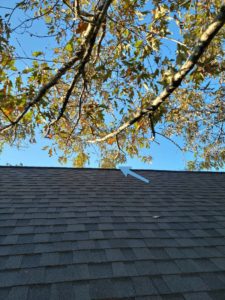Keep Pests Out of Your Home
15 low cost DIY steps you can take to keep your home free of bugs, rodents, bats, and snakes!
Do what you can to keep pests out of your home. Dealing with an infestation is much morse than making the effort to prevent them from getting into the house in the first place.
My wife recently had a Facebook memory from 3 years ago where she was asking her friends for help finding someone who could locate a dead rodent in our house. After 4 different people failed to locate it, I ended up finding it myself in under the flooring in the attic. It was the tiniest mouse, but the smell of its dead body had nearly driven us out of the house. How that one lonely rodent got inside remains a mystery. This was our first infiltration since the particularly bad mouse problem we had one winter when our son was a baby. My wife heard so much noise that she was sure we had racoons in the attic. She even called a wildlife exclusion company! She claimed that it sounded like something was pushing boxes across the attic floor, so you can imagine our surprise at hearing that mice were to blame.
Our exterminator put out rodent poison in places where it wouldn’t be accessible to children or pets. It wasn’t until we successfully prevented them from entering that we finally solved our problem. We forgot about the poison entirely until years later when our refrigerator broke. I took the old one outside while waiting for the new one to arrive. When I came back inside, my dog had a smear of blue on her face to match the smear of blue on the floor. Luckily our vet’s office is only minutes from our house, and she was fine.
Learn from My Mistakes
My wife’s recent Facebook memory reminded me of some of the other woodland creature invasions we’ve dealt with. When we were young and inexperienced homeowners, we had some preventable situations that led to panic and chaos. A chipmunk once entered through the dryer vent when I wasn’t home. My wife released it from the laundry room after opening all the doors and windows and somehow succeeded in driving the chipmunk out of the house with a broom. We were not so lucky later on when she thought the same trick would work with a squirrel that fell into our fireplace. Follow these tips to keep pests out of your home, and you won’t find yourself cleaning up 2 days worth of squirrel excrement from your laundry room after trapping one with a honey bun as bait.
You’ll be happy to know that your pre-purchase home inspection covers all of these items. Unfortunately, these are not usually high priority concerns when you’re buying a new home. If you don’t ask the seller to address concerns in order to keep pests out of your home, you should plan to tackle those things as soon as you can after moving in. Here’s a sample home inspection report to give you an idea of what to expect.
1. Seal Penetrations
Penetrations are the holes where pipes, wires, and vents enter the home. Keep pests out of your home by filling any gaps in these areas with steel wool or copper mesh and securing in place either with caulk or expanding foam. Rodents do not like to chew through these mesh products in order to gain entry, but rodents will be able to move the mesh if you don’t secure it.
2. Repair Damage
Repair any areas of wood that already have damage from rot or pests in order to prevent the holes from becoming larger. If you don’t have the money to repair the damage properly, you can temporarily take care of these areas the same way you would fill penetrations in your siding. If going that route, you should still seal any exposed unpainted wood to prevent further decay.
3. Secure Loose Siding
If you have vinyl siding, secure any loose pieces and replace any sections where siding is missing. These gaps are perfect areas for snakes and bats to enter, and neither make very pleasant roommates. Bats are particularly difficult to get rid of because they’re federally protected.
4. Repair or Replace Foundation Vents/Screens
The screens on foundation vents are often very flimsy and easily damaged. It’s common to see screens completely missing on older homes, and once in a while the entire foundation vent is missing. If you have a crawl space, make sure all vents are in place with a sturdy screen covering them. This is one of the most important things you can do to keep pests out of your home, especially mice! You can hire an exterminator or handyman if you’re not sure how to do it yourself.
5. Make Sure Your Chimney Cap is Protected
Animals and birds can fall down your chimney. You should have a cap, which should have wire mesh around the outside. Check it every so often to make sure it is intact.
6. Check Your Dryer Vent
I see so many dryer vent dampers that are stuck open, just waiting for some critter to build a nest. The simplest solution is to just check the dryer vent cover periodically if it’s in an accessible location. Make sure you can open and close the damper freely. Avoid the type of dryer vent cover that has a cage or screening on the outside because it causes an increase in lint accumulation. This can prevent your dryer from working efficiently, and it can even become a fire hazard.


The images to the left show one vent cover style that I really like. There’s no way for anything to enter through the vent. I’ve used this style for years and never had any problems with it getting clogged. Plastic versions are available at a lower price, but the plastic becomes very brittle after a few years. Mine broke less than 3 years after it was installed. The one pictured here is currently $79,98 on Amazon, and you can find it here.
7. Secure & Seal Your Crawl Space Door
You wouldn’t think I’d need to say this, but it’s not sufficient to place a concrete block against your crawl space door to hold it in place. You certainly don’t want to see the door lying on the ground. Hinges should attach the door to the house, and it should have a proper latching mechanism. Just like our regular doors, the trim around your crawl space door requires regular maintenance such as caulking and painting. If the trim is soft or damaged, or there are visible gaps, it’s time to make repairs. If you have an ongoing pest issue or your door is warped, you should look into replacing the crawl space door. Curb Appeal Products sells very nice PVC crawl space doors that are easy to install and even come with weather stripping.
8. Screen Your Gable Vents
Most of us don’t usually venture to the far ends of our attics where we would be able to see the condition of our gable vent screens. If these areas aren’t easily accessible at your house, consider having an exterminator or wildlife exclusion professional take a look. Any animal that can climb your siding or reach your roof from a limb has the potential to end up in your attic.

9. Trim Trees & Shrubbery
As I’ve already mentioned, limbs allow animals to access your roof. You don’t want any limbs close enough on any side to allow a squirrel to jump to the roof, and you don’t want any limbs hanging above that will enable animals to drop down to the roof. Once you trim your trees and shrubbery, pests have one less way to get inside.
10. Check for Gaps at Eaves
Use a heavy gauge hardware cloth to fill in any gaps at eaves. Remember, rodents and snakes can squeeze into very small holes!


11. Check Doors & Windows
Keep pests out of your homes by making sure your doors and windows are properly sealed. You should not be able to feel a draft or see daylight around the edges. Many exterior doors have an adjustable threshold that will allow you to close any gap at the bottom. If yours does not, there is a variety of different types of seals available for door bottoms. Steel and fiberglass doors will usually have tracks in the bottom to allow you to slide a new door bottom. There are also u-shaped door bottoms, some of which screw on to the door. Another option is a door sweep that attaches to the interior of the door to seal the gap at the bottom. Weatherstripping must be replaced periodically due to deterioration, and several different types are available.
There are a number of different weatherstripping options available for windows as well. With newer style vinyl windows, you will usually see pile weatherstripping, which has a fuzzy appearance. This type tends to last longer than foam or rubber types that become brittle over time. Older wood windows that are very loose can be nearly impossible to seal properly with weatherstripping. If you have that type of windows and can’t invest the money for replacements, storm windows might be a good solution. In addition to preventing pests from entering, storm windows will improve your home’s energy efficiency. Most people are familiar with exterior storm windows, but there are also interior storm windows available from a few different manufacturers.
12. Replace Missing, Torn or Broken Window Screens
It probably isn’t necessary to say, but if you open your windows at all, you should have screens in place. Check the condition of your screens periodically to make sure that none are torn or damaged. Remember that flying creatures aren’t the only ones that can come through an open window! If you have any gaps around your windows, screens provide a little extra protection against insects even when the windows are closed.

13. Make Sure Ductwork Is Sealed
Gaps and holes in ductwork impact more than just our energy bills and comfort levels! In case other exclusion methods fail, you need to make sure they can’t gain easy entry into your home’s ductwork. Technicians making repairs can sometimes fail to adequately tighten connections, or even leave abandoned ducts blowing conditioned air into your unfinished spaces. Pests that enter your ductwork can do a lot of damage, or they can die and be quite difficult to locate. We actually found a squirrel skeleton in the vent under our kitchen sink. The air coming through that vent had been passing over that skeleton for years!


14. Check for Interior Gaps
Sometimes you can’t keep pests out of your home even when you do everything right. Sealing any gaps and holes inside your home can prevent them from entering your living space. It’s common to see gaps where pipes go through the walls and floors, but you should also be aware of any holes in sheetrock. You don’t want insects & rodents finding their way into your home’s finished living space from unfinished spaces such as the attic, crawl space, and between your walls.

15. Don’t Store Wood Piles or Trash Right Beside House
Ideally, it’s best to store firewood at least 30 feet away from your home. If you can’t keep it that far away, aim for a minimum of 5 feet. Stacks of firewood leaning against your home is practically an invitation for termites and carpenter ants. Keeping your wood off the ground and under cover will reduce the chances of rodents nesting there. Cardboard & trash are even more enticing to insects and rodents. It’s best to use an enclosed container with a lid and keep it at least 15 feet from the house. All of these steps will help to keep pests out of your home.

